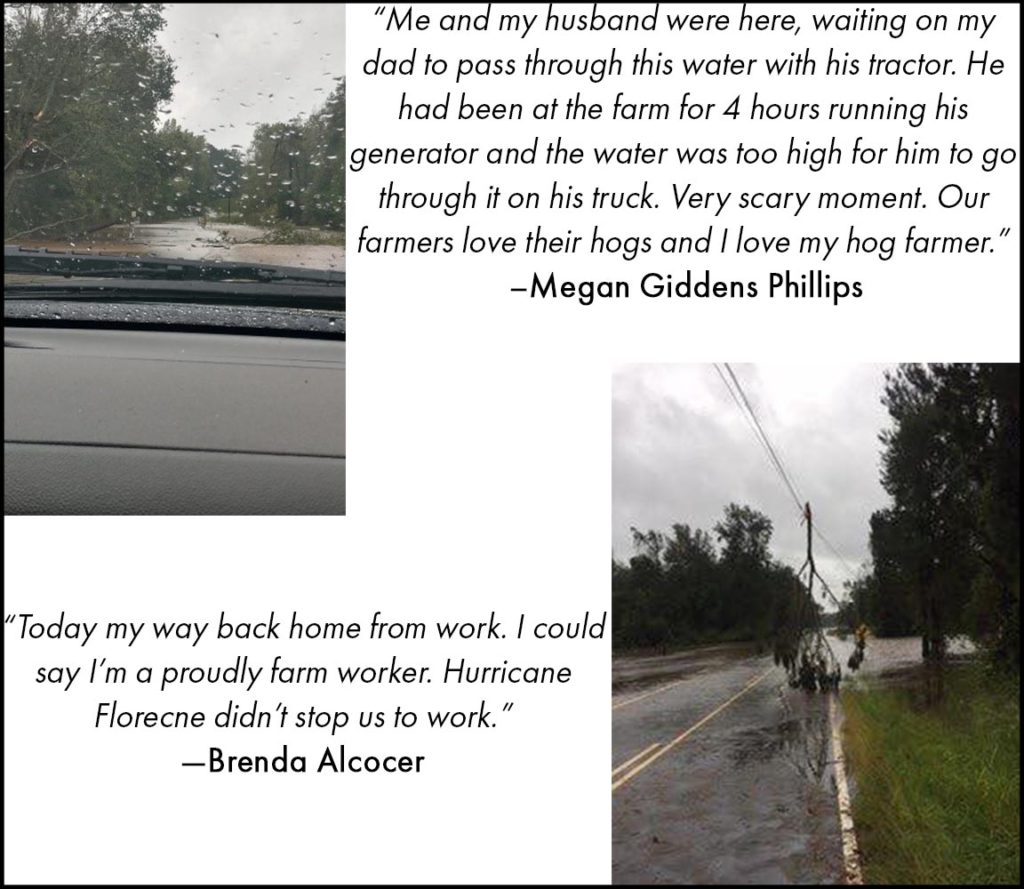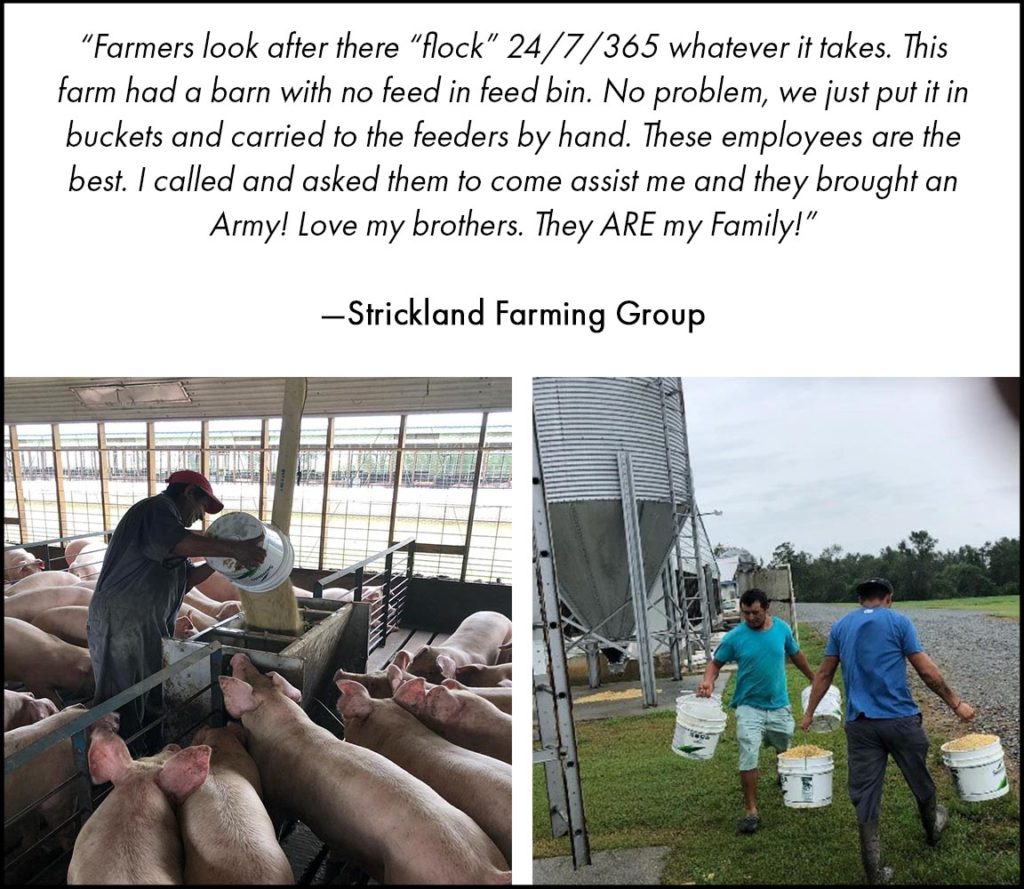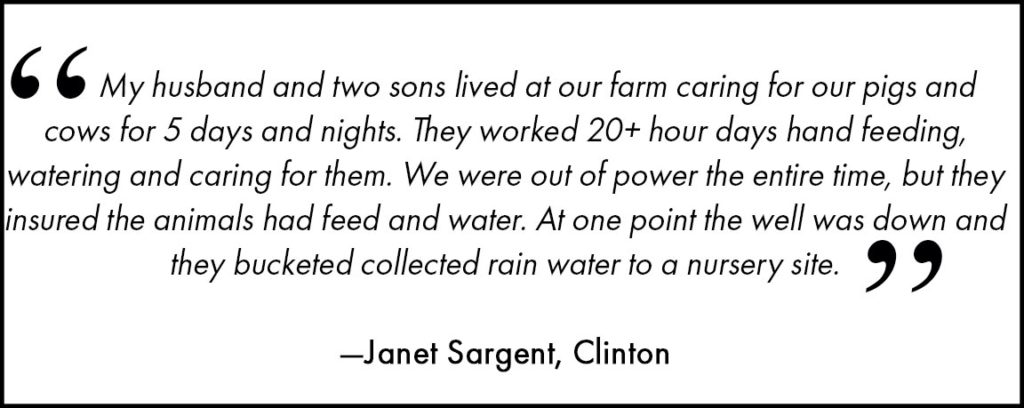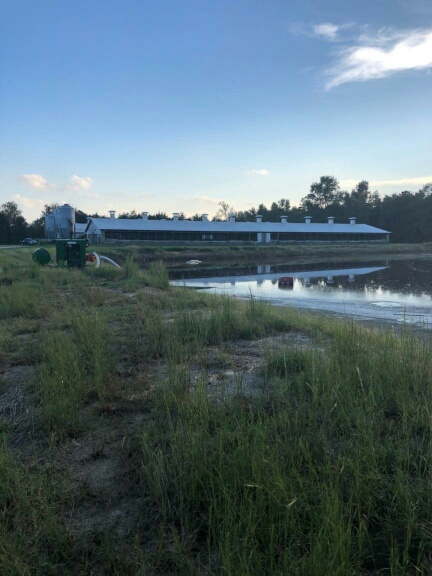There have been articles, news reports, and don’t forget the countless social media posts that focus around Hurricane Florence. Beyond the many memes about bread and milk flying off the shelves, and heart-breaking reports of devastation the storm brought, there were a great deal of stories spread about farmers. Unfortunately, the story that was told was often neither positive nor accurate.So, here is the story of the farmer. This is a timeline of events from Sept 7-present day told by farmers. This is our story.
Sept 7—North Carolina declares state of emergency in anticipation of Hurricane Florence. Governor Cooper waived transportation restrictions for farmers to allow them to harvest more quickly.
Sept 8—News Reports of Hurricane Florence making landfall in NC increase.Farmers continue to work daily in the field. They begin to pickup the pace in harvest and keep a constant eye on the weather. Hog farmers continue to manage lagoons just as they have the rest of the year. 20,000 pigs in high-risk areas are moved to higher ground.
Sept 11—Florence is a Category 4 and is expected to make landfall by Thursday morning.Farmers and friends come together to help get corn crops in before rain and wind destroy the crops. They work well into darkness. After all, a farmer’s work doesn’t end when the sun goes down. It ends when the job is done.
Sept 12—The storm has weakened but is still expected to cause serious damage and has now shifted south.Harvest continues across the state. For many it will be the last day they can get any crops in. Many farmers don’t have time to stop and eat, so it’s meals on trucks, tractors and combines.Truckers are delivering feed to farms, and farmers and lineman alike are preparing for Florence.Generators are getting primed and anything loose is getting tied down.
Sept 13—Rains begin to fall. Coastal cities begin to see flooding and wind damage. Florence is here.Any and all harvest comes to a stop as rain begins to fall. Taking care of animals continues as usual. The goal is to keep them comfortable and oblivious to any storm outside.
Sept 14—Florence camps out over NC, moving only 2mph. Severe flooding starts and at least 5 people have already died. Rain continues to fall.Farmers continue to monitor and care for their animals. Wind has started to cause some damage, but on the whole, all is holding up.
Sept 15—Florence continues to pummel NC. Death tolls rise as well as flooding. Water rescues are prevalent in the eastern part of the state. Farmers are feeling the impact of the storm. Lagoons are filling, but are contained. Some are struggling with equipment malfunction or storm damage. Many are without power and even having personal issues with their own home.Roads begin to flood and washout. Despite road conditions, farmers still brave weather and roads to care for their animals.Many farmers make the choice to just stay at the farm with their animals. It is their home away from home for a few days.For some, their choice to stay would trap them.
Sept 16—Rain continues. Some areas have received more than 30 inches of rain. Flooding has reached historic levels. ommunities across the Carolinas are praying for the rain to stop. Many roads are impassable, making it difficult or impossible to reach farms by vehicle. Farmers do whatever it takes to care for their animals and farm.
Many farmers are also first-responders. Their duties leave them exhausted, but their compassion and heart pushes them onward.
Sept 17—The sun shines on NC, but rivers are expected to crest in the coming days.Nothing has changed for farmers, except that water is coming from the rivers instead of sky. It is all boots on the ground (and in the sky) to get to farms and start fixing damages.
The farmers at this farm in Trenton, NC had a long several days. They did not go home for days, but stayed at the farm. They are keeping the pigs fed and watered. People have come to help. Water has risen to unprecedented heights.
Sept 18—Rivers continue to rise cutting towns off. It is a grim and hard time in NC. Flood waters are rising to historic levels. Farmers are working day and night. Many have lost their homes, but continue to care for their farms.
Sept 19-Present—Disaster in NC is ongoing. People are still in danger, and floodwaters are still rising. Farmers continue to work to care for their animals, battle generators, and manage lagoons. They are tired. Tears have been shed, some pigs have died, some lagoons have spilled, and some homes have been lost, but hope is ever present with farmers. They continue to fight.
There is also a sense of pride among farmers. Proud of each other for what they have endured and continue to endure. Despite historic floods, torrential rain, and long days, farmers continue.
They aren’t just proud of each other, though. There are many others proud of these men and women too.
Today, you can find farmers at their farms, in their communities, or cleaning up their own homes. If you drive through farm country, you may still have to dodge washed out roads. You may see drowned crops. There may be a person’s house turned inside out with all their belongings in the yard. Things are hardly back to normal.
Media, activists, and others will tell a horror story where Hurricane Florence and farmers are the villains and the public and animals the victims. The past few weeks have indeed been a horror story, but farmers should also be classified as victims. They have endured unimaginable events and faced so much loss.Farmers can also be deemed heroes of the story. They put their animals and others above themselves. They worked hard and even risked their health and lives during the storm. They saved animals. They saved people. They saved the day in some situations.Despite the stories being told, farmers do care. They prepared. They fought. They stayed. This is their story…the true story. It is the story of the farmer and it deserves to be told.


































